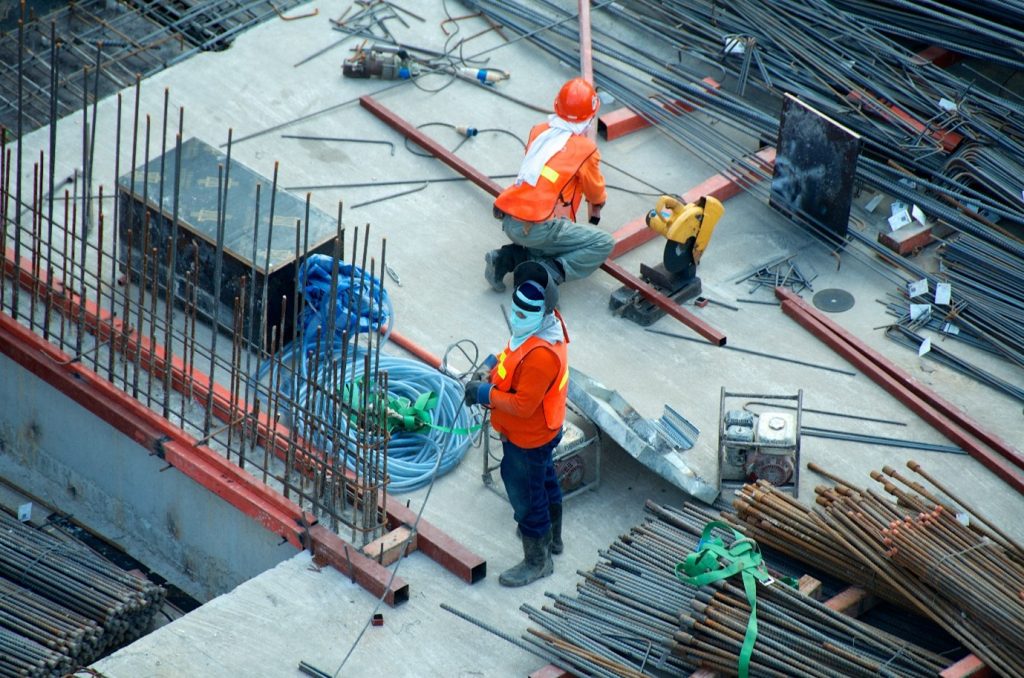Whether because of economics, necessity, or corporate social conscience, the construction industry, like just about every industry, has become very concerned with sustainability.
Doing so makes sense when you consider that reused, or repurposed items save money, and that reality has led to the concept of a “circular economy.”
The push for a circular economy has led to a significant shift in focus on job sites. The focus on “reused, recycled, or repurposed” saves money and helps reduce the consumption of resources.
In this article, Recycle Track Systems, a certified B-corp company focused on improving waste management and sustainability, outline the significant and growing role a circular economy plays across the construction industry.
Circular Economy Guiding Principles
A circular economy is more than just recycling whatever can be recycled. The concept has three foundational pillars: Reduce, Recycle and Reuse. The goal is to extract as much use out of an item as possible. One big part of that process is repurposing materials under the concept of reuse.
Circular Economy Influence on the Construction Industry
Pushing the concept of a circular economy achieves three things immediately:
- Reduces the use of natural resources
- Creates less waste
- Creates savings in the form of reused materials
Each of those benefits gets accomplished simultaneously, meaning any skepticism regarding shifting construction practices to a sustainability model gets addressed as the changes get employed.
For example, recent supply chain disruptions forced construction materials providers to get their raw materials from alternative sources. That led to dramatic price increases for construction materials and scarcity of some materials. A circular economy reduces that challenge by reducing new raw materials needed on a job.
On a job site, this means saving usable scraps or other materials for use elsewhere in a job or on another job. It also means repurposing materials whenever possible. Finally, it means paying attention to waste and recycling everything recyclable.
Shifting Materials Trends
While the concept of a circular economy is relatively new, it has already made an impact. The focus on sustainability has shifted to higher-end materials that last longer than standard building materials. Consumers want products that align with their values, and construction oriented towards a circular economy aligns with their environmental awareness.
Here are some specific examples of a circular economy influencing the construction industry.
Offices
Whether new construction or renovating old office spaces, the focus is now on choosing materials, furnishings, features, and décor made from sustainable materials. Ratings such as the Leadership in Energy and Environmental Design (LEED) matter more than ever.
With new office construction, ratings and certifications for LEED or WELL are a selling point. For companies looking for new office space, choosing a company that prioritizes LEED and WELL compliance and certification make it clear the company values sustainable principles. Sustainability is important to younger employees, and having those certifications can attract top, younger talent.
Homes
Home buyers want a house built to last. That means materials must be of higher quality. The push for higher-quality building materials plays into the concept of a circular economy because homes that use better-quality products will last longer and need replacement less often.
The cookie-cutter, throw-them-up-quickly models of the last 30 years met home availability needs, or tried to do so. Homeowners of those types of homes, however, are now using better quality materials for renovations and remodeling as well as repairs. That demand is not likely to go away any time soon. The trend will likely increase as Gen Z and younger millennials move into the prime home-buying years.
Refurbish, Remodel, Renovate
A circular economy seeks to use materials to the fullest. In the construction industry, that means trying to reuse or repurpose materials as much as possible. The trend of reusing or repurposing translates practically into homeowners upgrading their homes with higher quality materials and commercial buildings doing more to reuse or fix rather than replace.
That push exists with new construction as well. The concept of a circular economy works well with the age-old focus of most contractors: Get as much use out of materials as possible to avoid expenses. By using excess drywall on other jobs or reusing lumber when possible, contractors maintain sustainable principles just by doing what they always did.
Recycle
Think of the average work site, the dumpster that accompanies it, and all the materials that end up in it. While that dumpster will never go away, the waste will be (or is being) reduced as workers apply recycling principles to their refuse.
Challenges to the Circular Economy
As with any concept, migrating to a circular economy is not entirely positive. There are unintended and anticipated consequences that are a direct byproduct of moving to Reduce, Recycle and Reuse.
Supply Chain Issues
One challenge is if everyone starts to use fewer materials, the demand for those materials will inevitably decrease. For instance, if contractors are now saving half a sheet of drywall, rather than discarding it, that is a half sheet of drywall they do not have to purchase for another job.
While one job might not make that much of a difference, the total number across the industry would be significant if every contractor did that on every job.
Higher Materials Costs
Higher quality materials will last longer but also cost a bit more. That will affect estimates and influence customers’ decisions to go with a project. While eventually, those trends will become normalized, there will be an adjustment, which likely means fewer construction projects until customers get used to higher costs.
Higher Labor Costs
The circular economy approach will impact labor costs in the following ways:
- Better skilled laborers who specialise in saving materials or working with repurposed materials
- More labor hours per project because of disassembling materials rather than “rip and chuck”
- Compliance costs in the form of specialized certification for workers
Final Thoughts
The circular economy impacts just about every consumer and industry. The construction industry gets impacted more than others because it relies on raw materials. That reality means the impact of sustainable building will change just about every aspect of construction in one way, shape or form.
 By Grace Donnelly
By Grace Donnelly